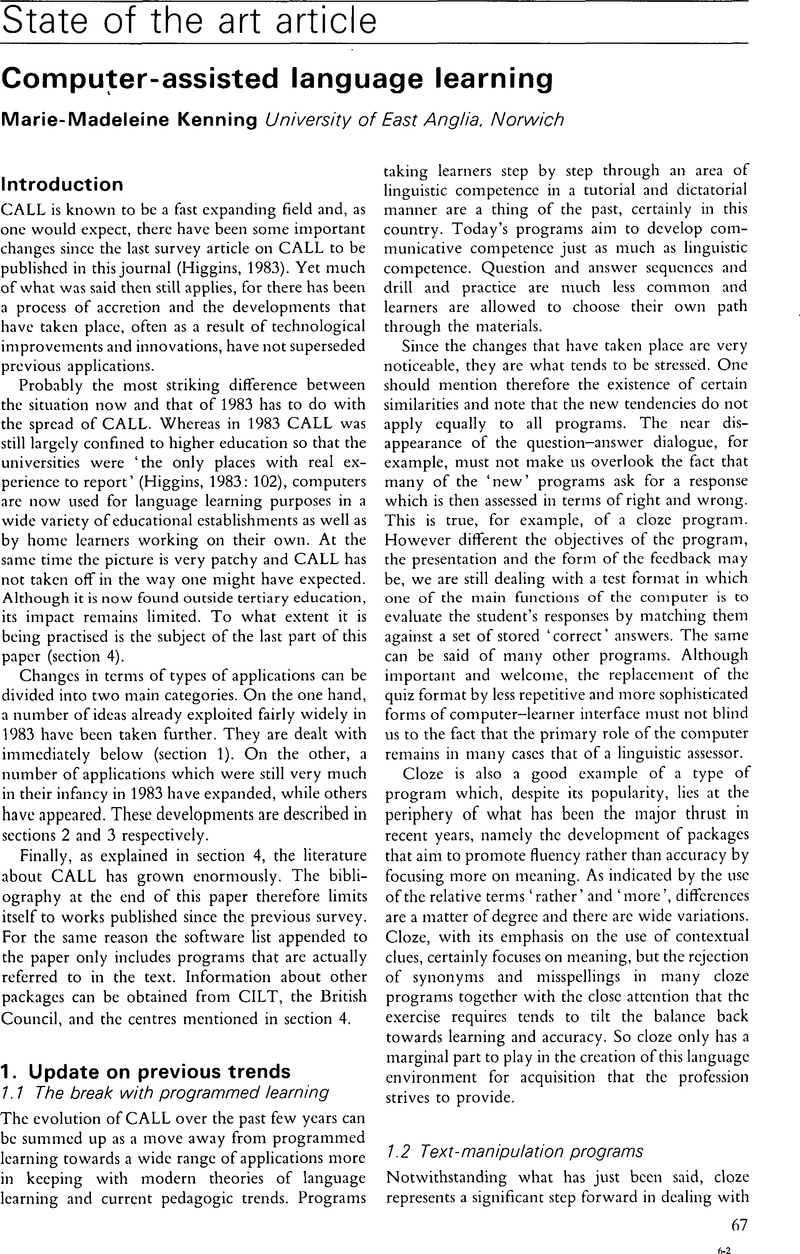Crossref Citations
This article has been cited by the following publications. This list is generated based on data provided by Crossref.
Sheerin, Susan
1991.
Self-access.
Language Teaching,
Vol. 24,
Issue. 3,
p.
143.
Liddell, Peter
1994.
LEARNERS AND SECOND LANGUAGE ACQUISITION: A UNION BLESSED BY CALL?.
Computer Assisted Language Learning,
Vol. 7,
Issue. 2,
p.
163.
Goodfellow, Robin
1995.
A REVIEW OF THE TYPES OF CALL PROGRAMS FOR VOCABULARY INSTRUCTION.
Computer Assisted Language Learning,
Vol. 8,
Issue. 2-3,
p.
205.
Jarvis, Huw
1997.
The role of IT in English for Academic Purposes: a survey of provison on presessional courses at British universities.
ReCALL,
Vol. 9,
Issue. 1,
p.
43.



